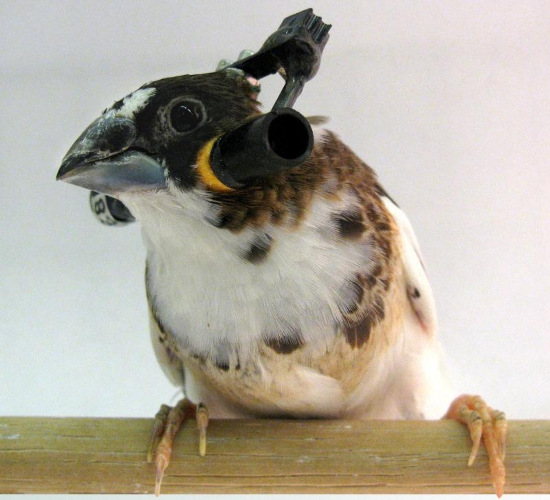How do birds learn to sing?
(US scientists) has built a mathematical model to explain why birds can sing properly.
'We built the first mathematical model using bird identities to evaluate their learning ability , ' said biologist Samuel Sober. Scientists hope this model can also be applied to other species, including humans.
Sober conducted the study with physicist Michael Brainard of the University of California, San Francisco.
Their research was published in the Proceedings of the National Academy of Sciences (USA), indicating that adult birds can fix small differences in vocals faster and better than big differences.
Sober took the Bengalese sparrow as a model to study the mechanism of correcting errors in the sound of the brain.
Similar to humans, birds learn to sound through listening to adult birds. A few days after hatching, the Bengalese sparrow began to imitate the cry of an adult bird.'At first, their voices were very different and unrecognizable , ' Sober said.
Young finches continue to practice, listen to their voices and correct errors until they can sing like larger birds.

Young birds are just like children, they make a lot of mistakes when learning to pronounce. As they get bigger, the distance between the errors is shortened. There is a hypothesis that the brains of humans as well as adult birds tend to eliminate big differences and pay more attention to small differences.
'To correct the error, the brain must rely on sensations,' explains Sober. 'The problem is, it's hard to believe the senses, for example when there is noise from the outside environment, the brain can assume that it misheard and ignore sensory perceptions.'
'Whether you are an opera artist or a bird, there are always different tones in your own voice , ' Sober said. 'When the brain perceives a difference in sound pitch, it simply assesses whether this difference is just an unrelated' noise 'or is actually an error in pronunciation' .
Researchers want to measure the relationship between the size of vocal differences and the ability to adjust brain differences. The experiment was conducted on adult finches.
When the birds sing through the microphone, the researchers use sound processing equipment to adjust the pitch of the bird and change the way the bird hears its own voice so it thinks it is singing wrongly.
'When we only changed the pitch of the song a bit, the bird found a very good difference and adjusted the song very quickly,' Sober said. 'When we adjust to its song to make more difference with the original song, the bird knows this is inferior, and to a certain degree, it doesn't detect it at all.'
Researchers use the data obtained to build a statistical model of the size of the sound error and the degree and level of difference in which a bird is aware. Currently scientists are conducting more tests to test and adjust the model.
'We hope that this mathematical model can be used to support the development of a speech recovery therapy system for humans, while helping us understand more about the brain's cognitive activity ', Sober said.
- Ask easy, difficult to answer: Why do birds sing?
- Study birds to discover how children learn to speak
- Being hungry will not sing
- Birds sing more flexibly when the weather fluctuates
- Migratory birds learn
- Noise pollution, birds must sing at night
- Listen to mice 'sing' like birds
- Pollution makes birds sing better
- Exercise and sleep help birds sing better
- The sooner the eggs are laid, the better the birds sing
- How do birds learn to fly?
- Why are female birds singing less and less?
 Animal 'suffering' after hibernation
Animal 'suffering' after hibernation Why do goats climb well?
Why do goats climb well? Scientists were surprised to see chimpanzees eating turtles
Scientists were surprised to see chimpanzees eating turtles Giant catfish died deadly due to drought in Thailand
Giant catfish died deadly due to drought in Thailand